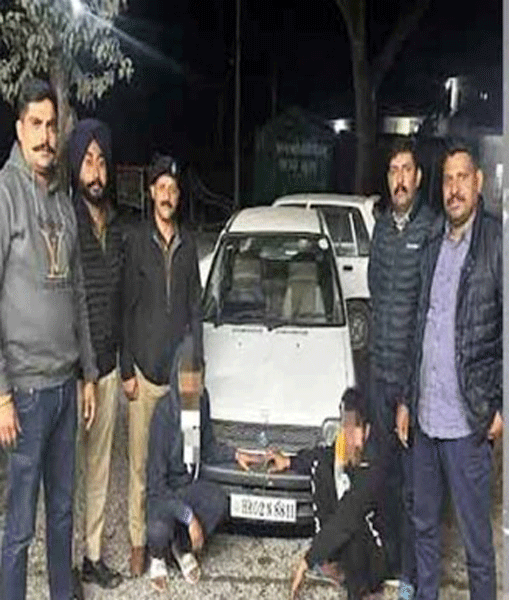Shimla, Feb 1,
Himachal Pradesh, long celebrated for its environmental stewardship, finds itself grappling with a severe fiscal crisis. Despite its ban on commercial green felling since the 1980s, which safeguarded its forests, the state now faces economic turmoil due to decades of policy mismanagement, shrinking agricultural land (now just 10% of its total area), and the Centre’s control over its hydropower projects, which contribute minimally to state revenue. While large infrastructure projects such as highways, dams, and airports have eroded fertile valleys, industrial growth remains stifled by infrastructural gaps. With tourism and horticulture failing to offset these losses, the government has turned to a controversial but potentially lucrative lifeline—medicinal regulation of cannabis cultivation.
Support Independent Journalism Complete Your Membership
Choose Your Membership
On January 24, 2025, Chief Minister Sukhvinder Singh Sukhu’s cabinet approved a pilot project to study the feasibility of controlled cannabis farming, making Himachal Pradesh the sixth Indian state to explore this avenue. This resolution mandates two state agricultural universities—Chaudhary Sarwan Kumar Agriculture University (Palampur) and Dr. YS Parmar Horticulture University (Nauni)—to jointly assess strains suitable for industrial, medicinal, and textile use. The Agriculture Department has been designated as the nodal agency to draft strict licensing protocols and implement monitoring frameworks.
For centuries, cannabis was an integral part of Himachal’s agrarian and cultural heritage, used in traditional medicine, religious rituals, and fiber production. However, the post enforcement of the Narcotic Drugs and Psychotropic Substances (NDPS) Act led to its criminalization, despite persistent illicit cultivation in districts like Kullu, Mandi, and Kangra. With this new initiative, the government aims to reclaim cannabis cultivation—legally and under strict regulations.
As per information available in public domain so far, the proposed model is designed to prevent misuse while maximizing economic benefits. Only farmers with state-approved licenses will be permitted to grow cannabis, with plots geotagged and monitored via drones. Any crop exceeding 0.3% THC (the psychoactive compound in cannabis) will be destroyed to prevent diversion into recreational drug production. The state also plans to collaborate with pharmaceutical, textile, and biofuel industries to ensure cannabis is processed into legal products.
“This isn’t about legalizing charas (hashish),” says Agriculture Minister Chandra Kumar. “It’s about monetizing a crop with global demand while curbing illegal trade.” Himachal’s cannabis, known for its high CBD (a non-intoxicating compound with medicinal value) content, could tap into the global medicinal cannabis market, which is projected to reach $150 billion by 2030. Additionally, hemp fibers could boost India’s textile industry and reduce reliance on cotton.
Though not confirmed but reportedly, Cannabis has been cultivated by humans for over 12,000 years for medicinal, industrial, and recreational purposes. Countries worldwide have increasingly recognized its economic potential. In 2018, California generated $60.9 million in tax revenue from cannabis sales in just the first quarter. Washington and Colorado, which legalized cannabis in 2014, saw their tax revenues from cannabis income reach $300 million in 2017. According to the Hemp Business Journal, the U.S. hemp-based product market grew from $688 million in 2016 to $820 million in subsequent years. Most of North America, Canada, Europe, China, and Australia have already legalized hemp-seed cultivation for industrial and medicinal purposes. India has also taken steps toward legalization, with Uttarakhand pioneering policies on medicinal and industrial cannabis cultivation. Himachal Pradesh, with its favorable climate and expertise in cannabis farming, has the potential to position itself as a leading hub in this sector.
The Challenge enroute
Despite its economic potential, regulated cannabis cultivation faces significant challenges. Critics argue that enforcement remains a weak point. Guman Singh, coordinator of the Himalaya Niti Abhiyan, warns, “Corporate lobbies see gold in cannabis, but without ironclad oversight, licensed farms could leak into the drug trade.” Uttarakhand’s experiment—where illegal diversion remains rampant—highlights these risks.
Farmers, though cautiously optimistic, have their concerns. Rajesh Thakur (name changed), a Kullu-based farmer, says, “We’ve lived in fear of raids. Legalization could mean steady income, but will the state ensure fair prices?” Many fear that corporate monopolies and high compliance costs could marginalize smallholders.
Health experts add another layer of caution. A psychiatrist from Shimla Dr. Anjali Sharma, notes, “Even regulated access might normalize cannabis use, risking increased dependency among youth.” The government plans countermeasures such as public awareness campaigns, stringent penalties for misuse, and restricting sales to medical and industrial buyers.
Himachal Pradesh’s commitment to conservation presents another challenge. While the 1980s ban on green felling preserved forests, it also limited economic opportunities. Cannabis, often grown on slopes, can pose ecological risks if cultivated unchecked. Officials argue that hemp’s low water requirements and soil-enriching properties make it a sustainable alternative, but large-scale expansion must be carefully managed to avoid environmental degradation.
To ensure success, the pilot project hinges on three key strategies: technology-driven transparency through blockchain-based supply-chain tracking and AI-powered surveillance to prevent illegal diversion; grassroots governance by involving panchayats in licensing and oversight to ensure that local communities benefit rather than large corporations. The state also seeks to emulate successful international models. Uruguay’s state-controlled cannabis sales have funded social programs, while Colorado combined regulation with robust public health initiatives.
A new chapter for Himachal Pradesh?
For Himachal Pradesh, this is more than just an economic experiment—it is a test of its ability to balance tradition with modernity and commerce with conservation. The state’s history of self-imposed restraint, exemplified by its green felling ban, now faces a new challenge: Can it harness a stigmatized crop for public good without succumbing to greed or regulatory failure?
As Chief Minister Sukhu asserts, “We’re not just reviving an ancient crop; we’re rewriting the rules of responsible governance.” If executed effectively, controlled cannabis cultivation may not only rescue Himachal’s floundering economy but also set a precedent for sustainable, high-value agriculture in India. The world now watches as these Himalayan hills embark on a high-stakes journey to prove that even the most controversial plants can bear fruit when rooted in regulation and equity.






